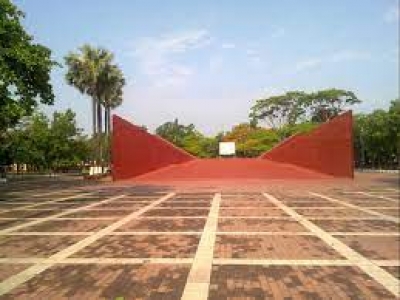New Delhi, Nov 30, : The genocide in 1947 in Mirpur (PoK), exposed the satanic nature of the Pakistani army and its deceptions and cheating character.This is now being made public to the world as its standard USP. Bal K.Gupta, in his book “Forgotten Atrocities – Memoirs of an Indian Survivor of 1947 Partition of India”, revealed that Mirpur was a place where death seemed merciful but the man had forgotten everything.Every night I used think it would be the last, and I would pray for it to come.”
It’s been 74 years since the terrible hell that was unleashed upon 18,000 brave Mirpuris, who chose martyrdom over submission during fighting with Pakistani raiders between November 25-27 1947.The marauders who lived off the cries of the dead and wounded in Mirpur enjoyed the most horrible song of death.
Mirpur was the border between India and Pakistan following the Partition.
The Pakistan government had a well-known plan to seize J&K by force.It decided to cheat the Mirpuris.
It sent Mirpur a bag of pamphlets in Urdu in the second week of Oct 1947.The pamphlets stated that if the citizens allowed the Pakistani army to establish itself at Mirpur, they would be granted a special status within the country.
The proposal of Pakistan was rejected by the patricians, who vowed to fight until the last bullet if the Pakistani army advanced.When Pakistan was forced to swallow the bitter truth that Kashmir would be held by India on October 26, it made a secret agreement with Pathan mercenaries called the “Zen and Zar Agreement”, in which the women of Mirpur would be given to the Pathans and the land to Pakistani.
Then, using deception, it drove through Mirpur and drained it through nonstop firing and heavy gun operations from the Pakistani army.Sikhs and Hindus were the first to be exterminated.
Insufficient police and young men protected the city with little ammunition and sent the armed forces home on November 6, 10, and 21, 1947.They would rather die than surrender.
The Indian government was unable to save Mirpur due to technical problems in the wireless at Mirpur’s police camp and political differences between India and J&K.
November 24, the doomsday was marked by heavy artillery shelling, heavy grenades exploding, and a declaration of war in Pakistan by Mirpur.
However, thick smoke and fires saw spirited resistance via hand-to-hand combats against the infiltrators.
The security was eventually reduced to zero.
Wazir Wazarat, the head of the state administration, decided to covertly move into Jammu and leave behind the city’s population to face the rage from the marauders.
The citizens were left to the hungry wolves to savour.
Their bodies covered every inch of the land, killing more than 12,000 people.However, this was not the end.During the night, 2,000 people were taken prisoner and asked to give their cash and jewellery.Before being tortured and executed in batches throughout the night, the men were asked to remove their clothes.
According to “Zen” and Zar, the women “belonged automatically to the Pathans.” Further, another 2,000 were killed in groups, and the rest of the 5,000, all Hindus or Sikhs, were held at the Alibeg prison.The prison was actually a gurdwara that was destroyed in the invasion and used as a prison.
A Sikh holy shrine was turned into a slaughterhouse.
The Himalayan winds blew coldly through the heads of the captives.Their skin was peeling and their necks were limping, begging for death.
They prayed for mercy, a quick slash of sword, or a bullet in the heart — an easy death.
Mohammad Ibrahim, a young Muslim lawyer, won the trust of the Alibeg prisoners of Mirpur on December 1, 1947.
He promised to ensure that they would be employed in Pakistani factories until they were freed.As a gesture of good faith, he gave a few Muslim caps and mufflers as a gesture to the Pakistani soldiers.
They were killed on the Jehlum canal the next morning.This happened daily to Hindus as well as Sikhs.Evidently, the “eyes” of Allah considered the captives “criminals” for not being one.
A team from the International Committee of Red Cross (ICRC) arrived in January 1948 and took over the management of the Alibeg camp.They managed to exchange the captives for the same number Indians who were willing to travel to Pakistan by March 18, 1948.The Alibeg camp contained only 1,600 people.
All the rest were either killed, kidnapped, or disappeared.These 1,600 were either disabled or aged to the point of being handicapped.
Women were spared, but only to be taken into misery.
Jammu and Kashmir’s government built a memorial called “Mirpur Shaheedi Samark” on Mirpur Road (Jammu) to remember the martyrs.
It was named so on November 25, 1998, to pay tribute to the unnamed heroes of the country who gave their lives but refused to give in to the satanic plans by Pakistan for J&K.
Mirpur was a place of beautiful sunrises and sunsets as well as religious harmony and quality living.
This soulless city is home to Mangala Dam, the 7th largest dam in all of the world.It was built on the graves courageous people who fought for the survival of their homes.
The world is puzzled: What does it take to make a country that is “peaceful” or “highly-religious” so shameless?
arm/ #Mirpur #ghost #town #Delhi
.







